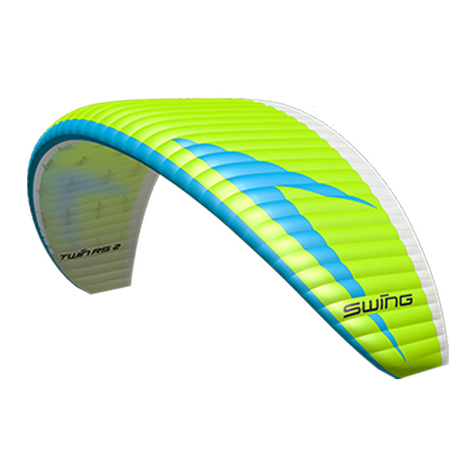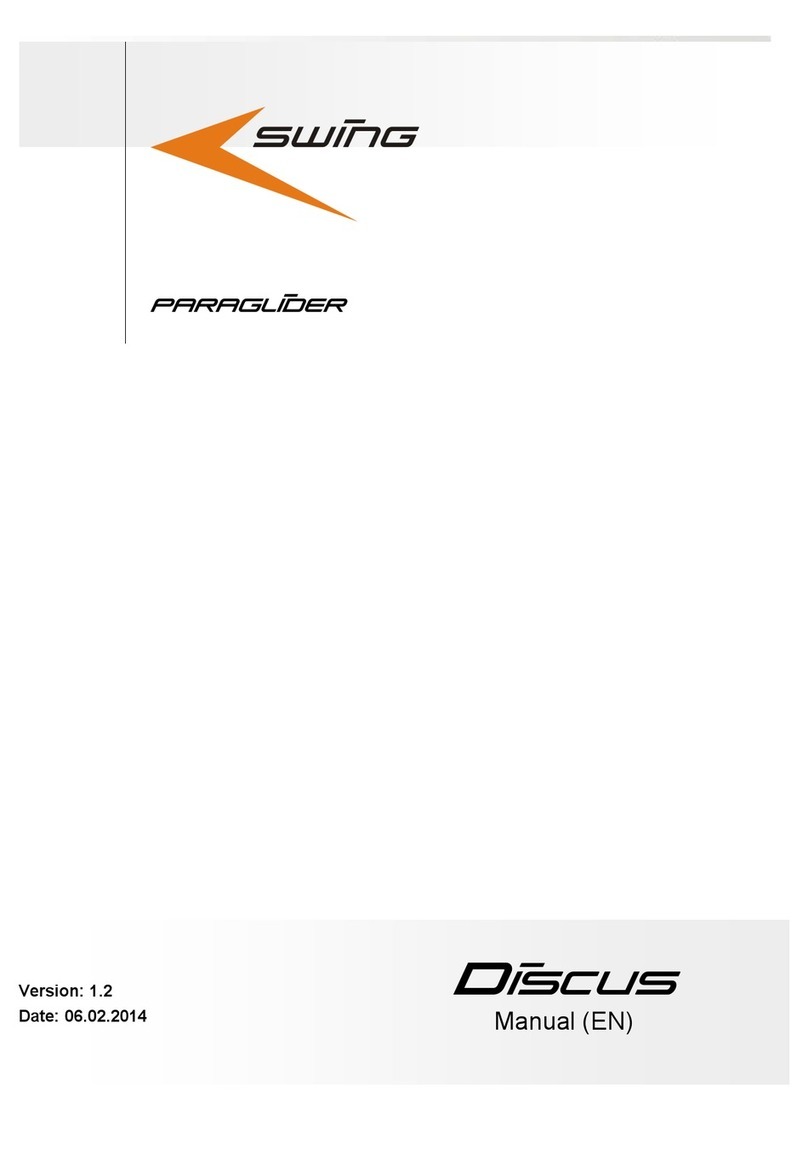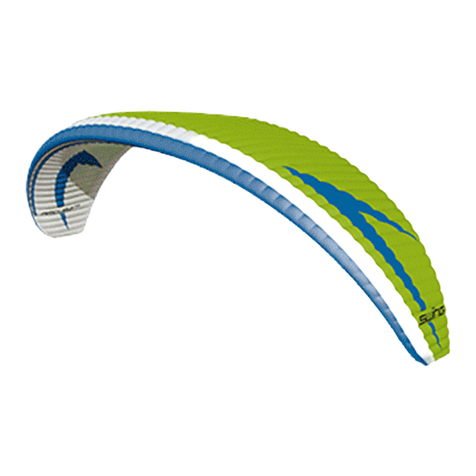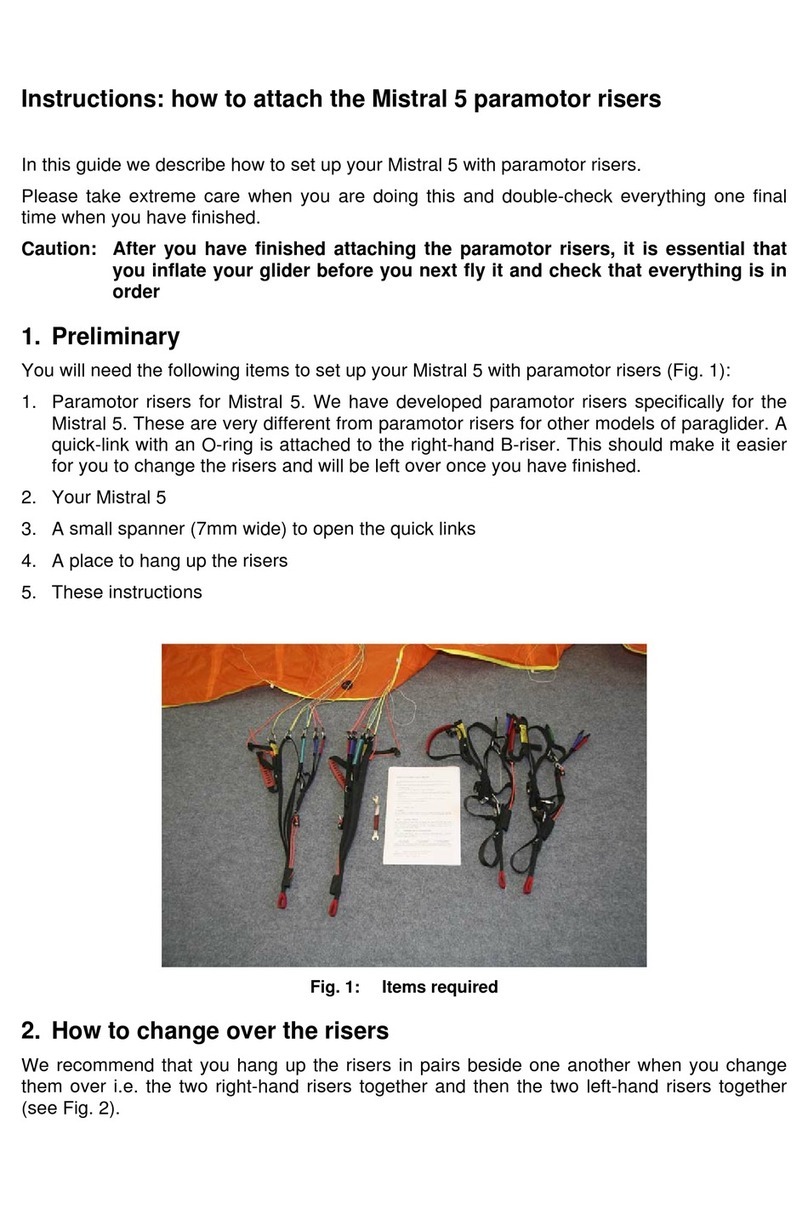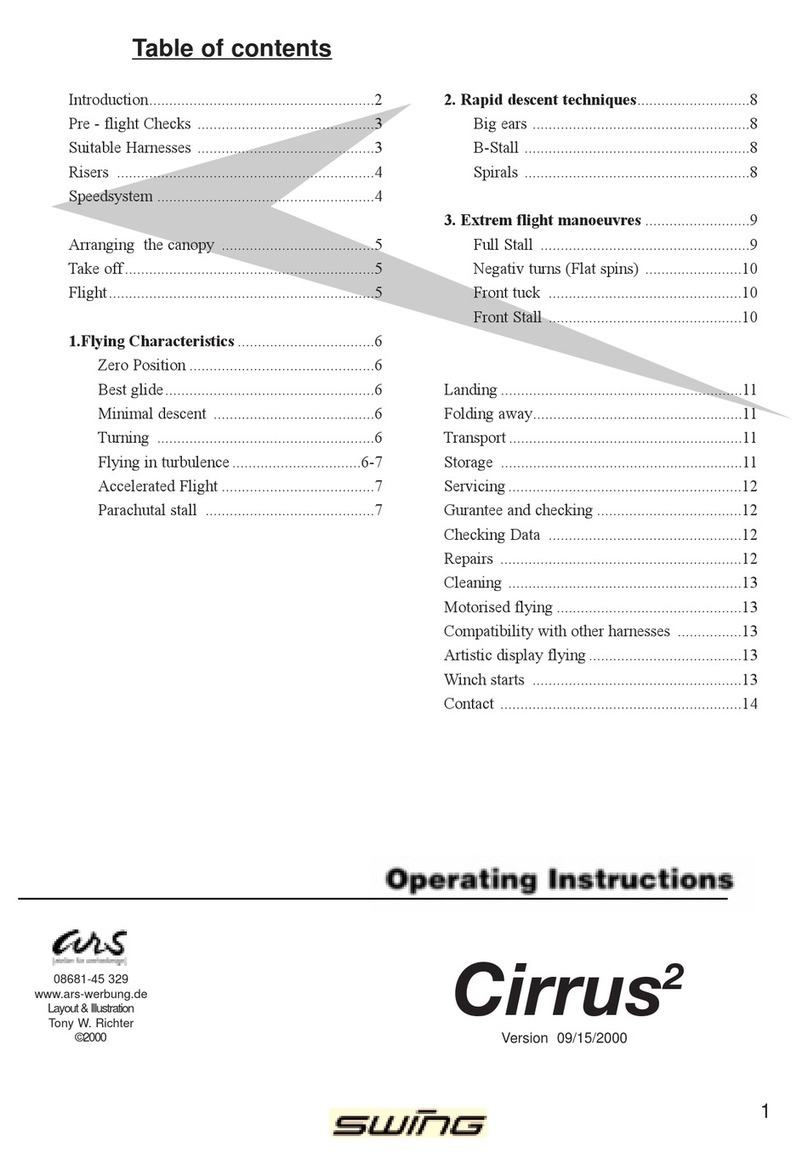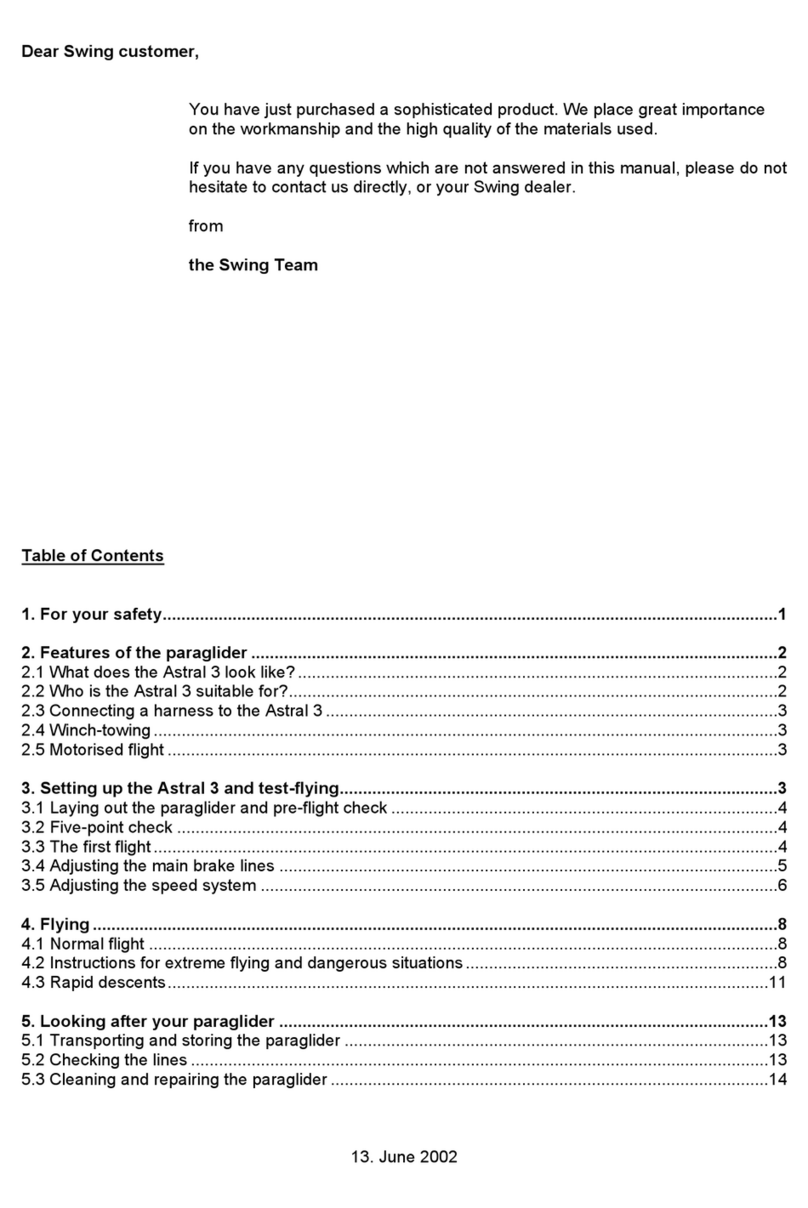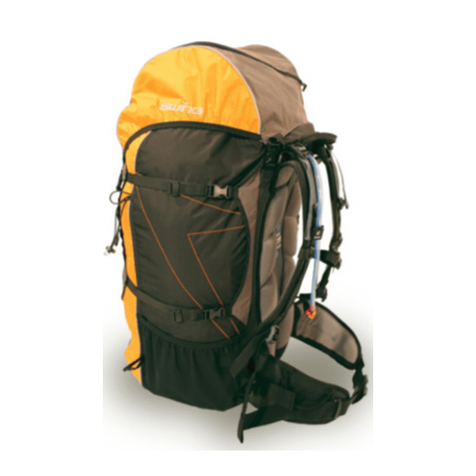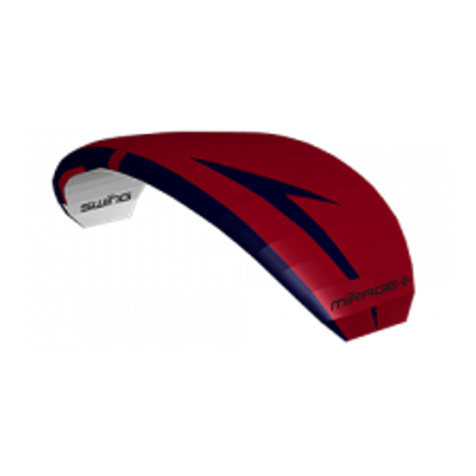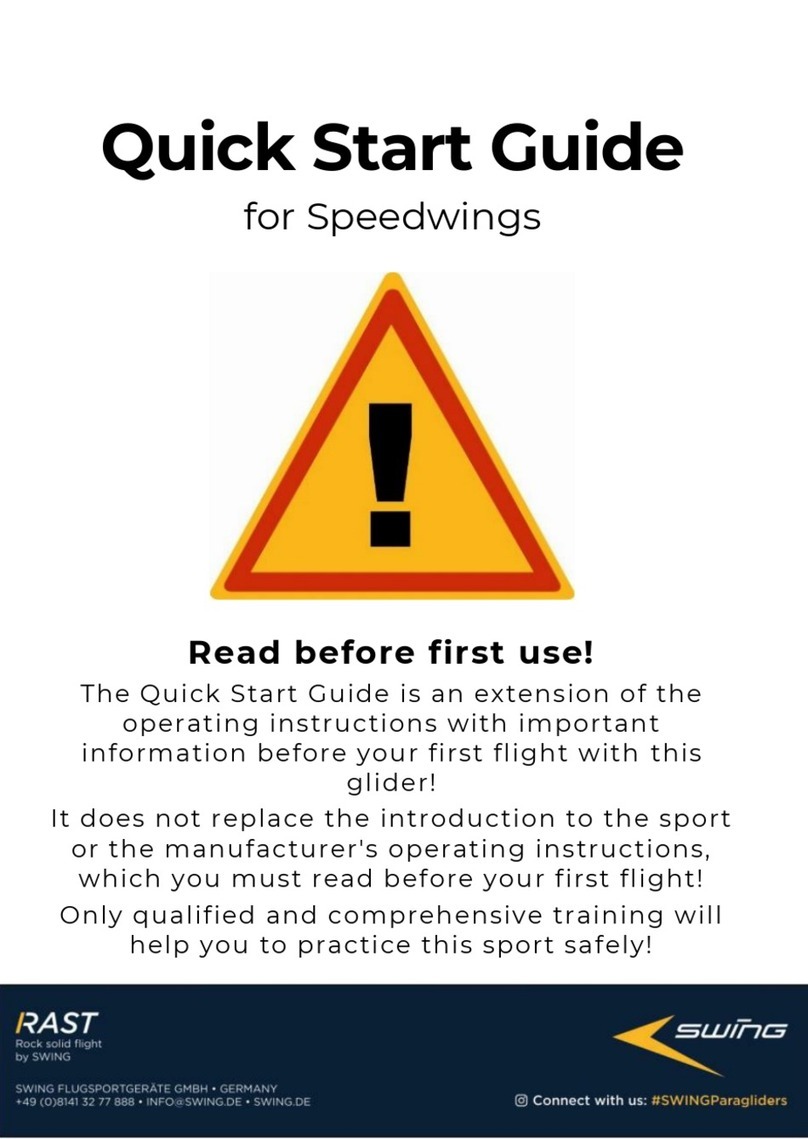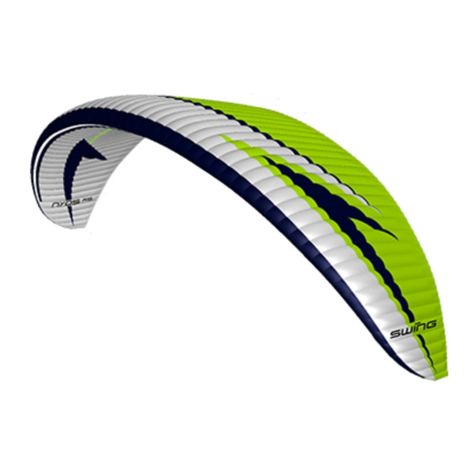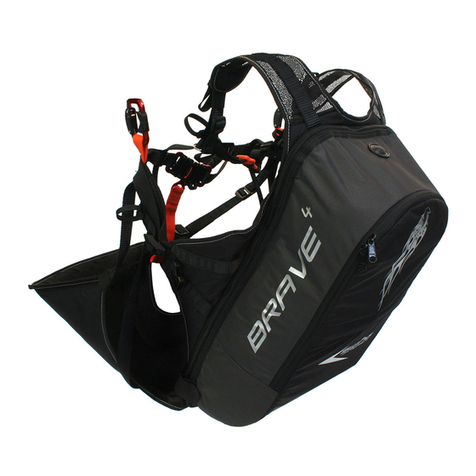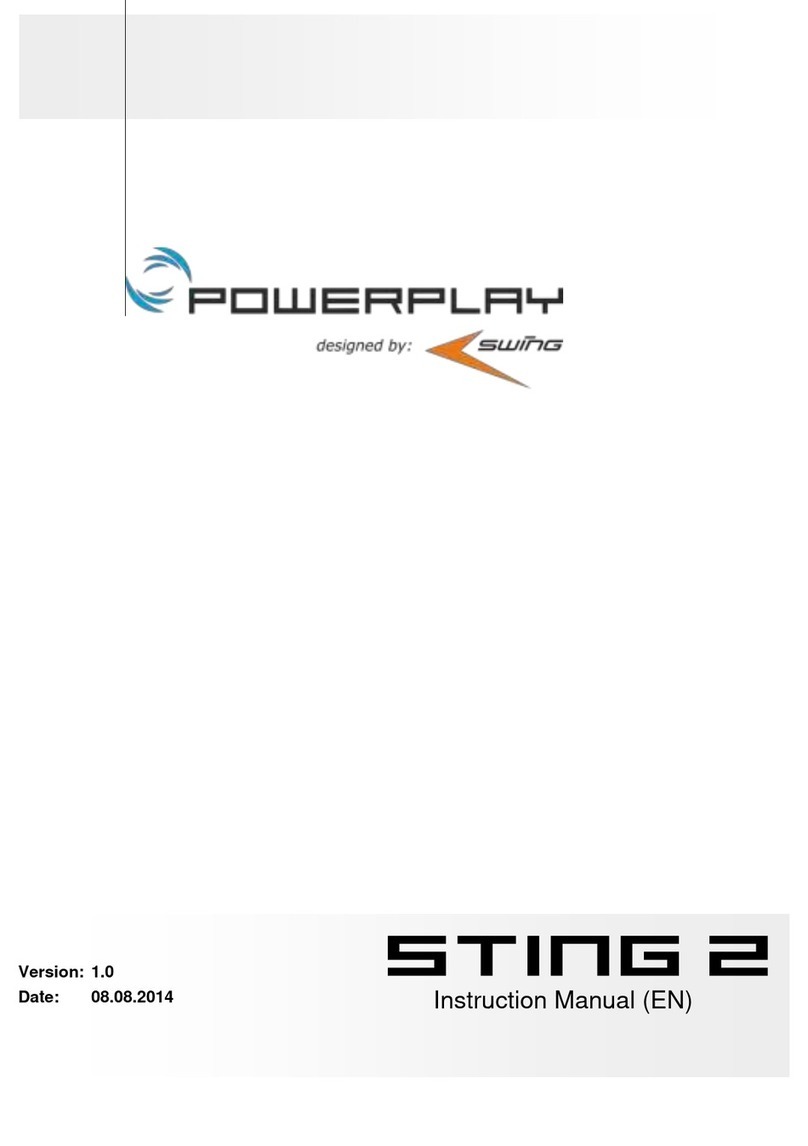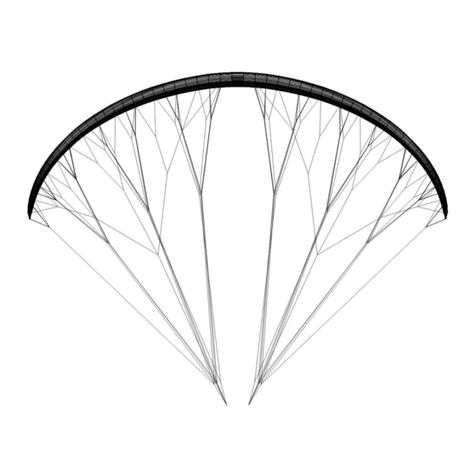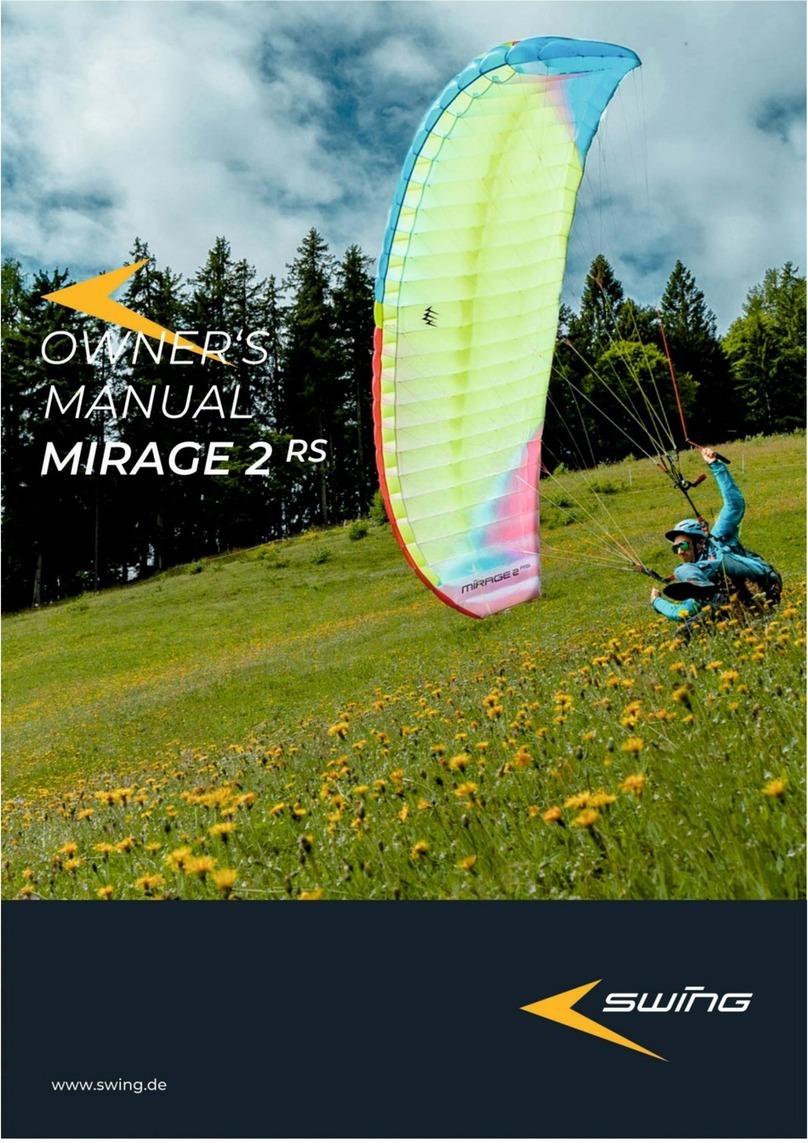Safety advice
All forms of aerial sport involve certain risks.
When compared with other types of aerial
sport, paragliding has the lowest number of
fatal accidents measured according to the
number of licensed pilots.
However, few other sports demand such a high
level of individual responsibility as paragliding.
Prudence and risk-awareness are basic
requirements for the safe practice of the sport,
for the very reason that it is so easy to learn
and practically anyone can do so. Carelessness
quickly lead to critical situations. A reliable
assessment of conditions for flying is
particularly important. Paragliders are not
designed to be flown in turbulent weather. Most
serious paraglider accidents are caused by
pilots misjudging the weather conditions for
flying.
Please bear in mind that any aerial sport is
potentially dangerous and that ultimately you
are responsible for your own safety.
We therefore strongly encourage you to fly in a
conservative manner. This applies both to the
choice of conditions in which you fly and also to
the safety margin which you allow when
carrying out the various flying manoeuvres.
We recommend that you only fly using
paragliding equipment, harness, reserve
parachute and helmet that have been tested
and certified.
In Germany, paragliders are subject to the
guidelines for aerial sports equipment and must
not under any circumstances be flown without a
valid certification. Independent experimentation
is strictly prohibited. This Manual does not
replace the need to attend training at a
paragliding school.
The CONNECT REVERSE 3 complies with the
airworthiness requirements for hang gliders
and paragliders at the time of delivery. The
manufacturer cannot be held liable for any
personal injury or material damage which
arises in connection with this harness.
The CONNECT REVERSE 3 leads the way in
development standards for paraglider
harnesses. It will remain airworthy for many
years if you look after it properly.
This Manual must be passed on to any new
owner of the harness. It forms part of the
certification and belongs with the harness.
Observe the other specific safety advice in the
various sections of this Manual.
Safety notices
Safety notices are issued when defects arise
during use of equipment which could possibly
also affect other examples of the same model.
The notices contain instructions on how to
inspect the equipment concerned for possible
faults and the steps required to rectify any
faults.
SWING publishes on its website any technical
safety notices and airworthiness instructions
which are issued in respect of SWING
products. We will also send you safety notices
directly by email if you have registered your
SWING ).
Safety notices are released by the
certification agencies and are also
published on the relevant websites.
Services such as RSS are also
available which allow internet users
to follow various websites and any
changes made to them without having to
access them individually. This allows much
more information to be followed than was
previously the case. You should therefore visit
the safety pages of the certification agencies on
a regular basis and keep up-to-date with new
safety notices which cover any products
connected with paragliding (refer to Appendix
for addresses).

